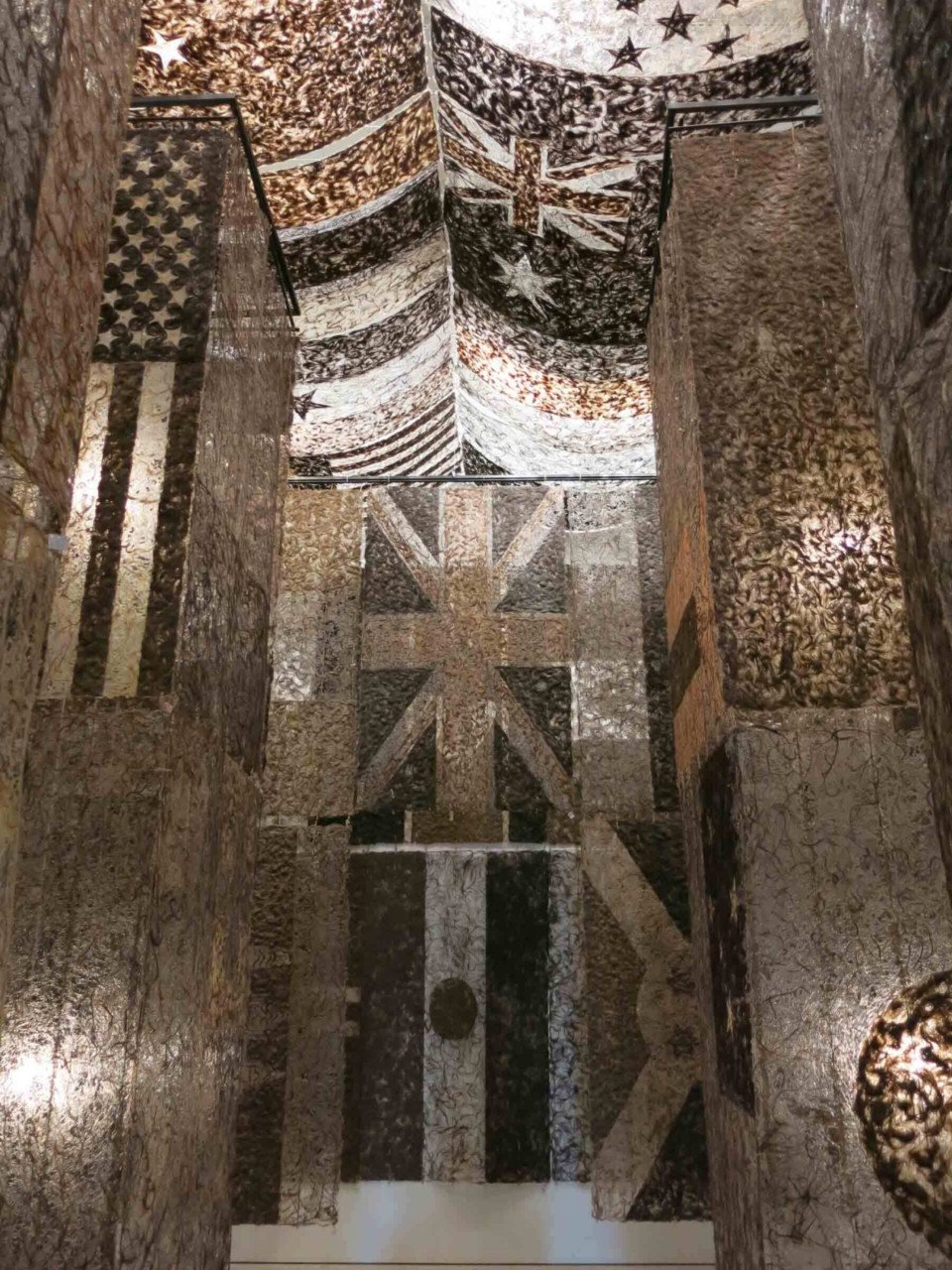By the Way, There’s a Work of Art Made of Human Hair in Salem
Chinese-born artist Gu Wenda used real follicles from 500,000 different heads to recreate 188 national flags—and you can see the nearly 25-year-old installation at the Peabody Essex Museum through November 5.
Follicle flags: The national standards of the world, made out of human hair, on view at the Peabody Essex Museum. / Photo © Gu Wenda Studio
Hair is such a fundamental element in how we identify ourselves. Whether worn long or short, colored by nature or otherwise, it has long been a symbol of individuality. But in the hands of a master conceptual artist, it can become a powerful symbol of how much we have in common. Such is the case at the Peabody Essex Museum, where from April 1 through November 5, the sunlit atrium of the new wing will be filled with 188 flags featuring human hair from 500,000 different heads.
The artwork, by Gu Wenda, is easily the most unusual installation in a long time to reach a New England gallery. A Chinese artist who relocated to Brooklyn in the late 1980s, Gu became a vital name in the generation of creators who exemplified and promoted the idea of a globalized art world, and in that spirit, he began his United Nations series of installations around the world using hair collected primarily from barbershops, salons, and individual volunteers. “Gu’s use of the term ‘united nations’ was more metaphorical than political, and so he mixes DNA material as a form of representation of this incredible mass of humanity,” says Trevor Smith, PEM’s associate director of multisensory experience. With more than 20 installations in the series, Gu has estimated that he’s collected hair from some 5 million people.

Gu Wenda, united nations – man and space, as installed at the Saatchi Gallery in 2014–2015. Human hair, glue and twine. © Gu Wenda Studio.
The exhibit, Gu Wenda: United Nations, is one of the grandest conceptions in the whole project, with flags representing all of the countries that were in the United Nations in the year 2000. As Smith describes it, Gu takes a loosely woven burlap and then “draws” with the hair, changing its density to create lighter or darker forms that match the national flags before gluing it to the surface. As a result, these flag facsimiles are devoid of the bright colors so symbolic to national identities but instead glow beautifully with the common shades of humanity. “The distinctions between countries begin to blur visually,” Smith says. “The sovereignty of those countries is defended with people’s bodies and their lives, so by putting the body first, the piece becomes a monument to what unites us, and perhaps a memorial to the price we pay if we aren’t united as humanity.”
Peabody Essex Museum, East India Square, 161 Essex Street, Salem, pem.org. If you’re confused about this whole thing, your answer might be here.
First published as part of the print edition of the April 2023 issue‘s spring arts preview.


